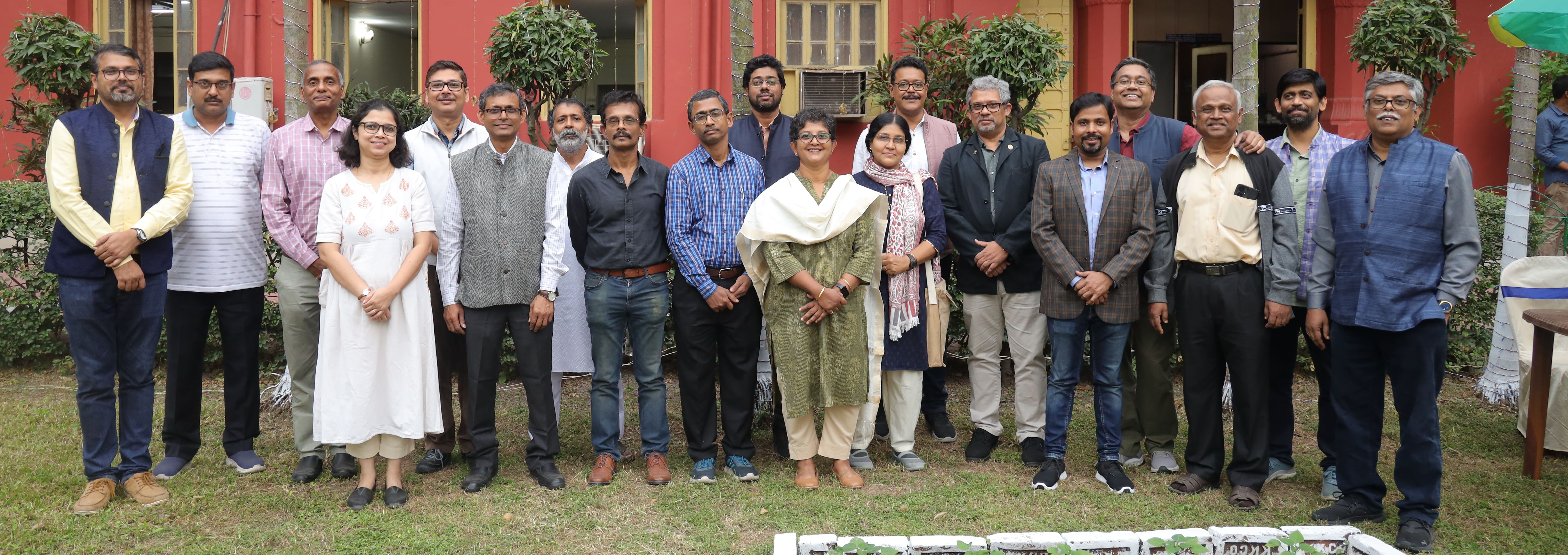Biological Sciences
Bose Institute has a storied history of making seminal contributions in diverse areas of life sciences, starting with our founder, Acharya Jagadish Chandra Bose. To enable better resource management and foster a strong collaborative environment, seven erstwhile departments engaged in life sciences research were amalgamated to create the Department of Biological Sciences. The Department commenced its journey on the 15th of May, 2023, bringing together faculty members having diverse research interests and expertise. There is extensive collaboration between members, resulting in the emergence of creative problem-solving approaches towards finding solutions for various challenges faced by our nation. The faculty’s interest can be broadly classified into four research domains: (i) Disease Biology, (ii) Microbiology, (iii) Plant Biology, and (iv) Structural Biology. The Disease Biology team has adopted a concerted, multidimensional approach towards understanding several human diseases, including cancer, asthma, neurodegeneration, infectious diseases and infertility. Team members use synthetic biology approaches for designing therapeutic interventions and finding markers that will enable early detection of these conditions. They are also implementing computational approaches for designing better healthcare delivery systems. The Microbiology team’s interest encompasses all three domains of life: bacteria, archaea and eukarya. The initiatives include finding solutions to microbial diseases relevant to the Indian context, exploring biogeochemically important microbes towards solving environmental problems, and investigating how microbes sense environmental cues and what adaptation strategies they adopt to respond to these signals. The mission of the Plant Biology team is to achieve fundamental knowledge in plant stress biology, plant-pathogen interaction, development biology, and genomics-assisted molecular breeding. They work on cereals, vegetables and oil seed crops, following the mandate of the National Action Plan on Climate Change (NAPCC), which aims to evolve and implement strategies to make Indian agriculture more resilient to climate change. The Structural Biology team has expertise in experimental and computational approaches, and they aim to tease out details of the general principles governing life functions and system-specific nuances. They use cross-disciplinary techniques like cryo-electron and light microscopy, spectroscopy, X-ray crystallography, mass spectrometry, simulations and thermodynamic calculations, and other quantitative techniques to gain insights into the structural aspects of various cellular machinery and pathways as well as pathologies related to dysregulation of those systems. The department proudly hosts two national network projects that unite members with diverse competencies. These are: National CryoEM Facility: Cryo-EM has emerged as the preferred method for determining the shape and conformational details of macromolecules and their assemblages, close to their native states (hydrated state). Bose Institute is proud to be one of the four centres chosen through a competitive IRHPA scheme by the erstwhile DST-SERB (ANRF) to establish a National CryoEM Facility in India. This centre will foster complementary collaborative research to transform the structure-guided drug discovery and therapeutics research landscape in India. It will also enable researchers to seek answers to fundamental questions in biology, which cannot be addressed with any other technique. Bioinformatics Centre: Bioinformatics is a theoretical and computational approach that adopts data-driven prediction methods to provide rapid and targeted solutions in diverse domains of biology, often complementing experimental methods. Bose Institute has been a pioneer in this research area since 1989, which continues with two DBT-funded projects to support the current initiatives. One is a multi-institutional National Network Project and another supports the core Bioinformatics Centre Facility. Researchers are adopting data analytical prediction method development and translating them into web-based applications with therapeutic relevance using upcoming methods like machine learning. The objective is to offer more precise and personalized therapeutic strategies. With the help of computer simulations, they are also analysing ‘molecules in action’ in atomistic detail towards developing strategies to modulate the functions of biomolecules for developing biotechnological solutions for national needs.
